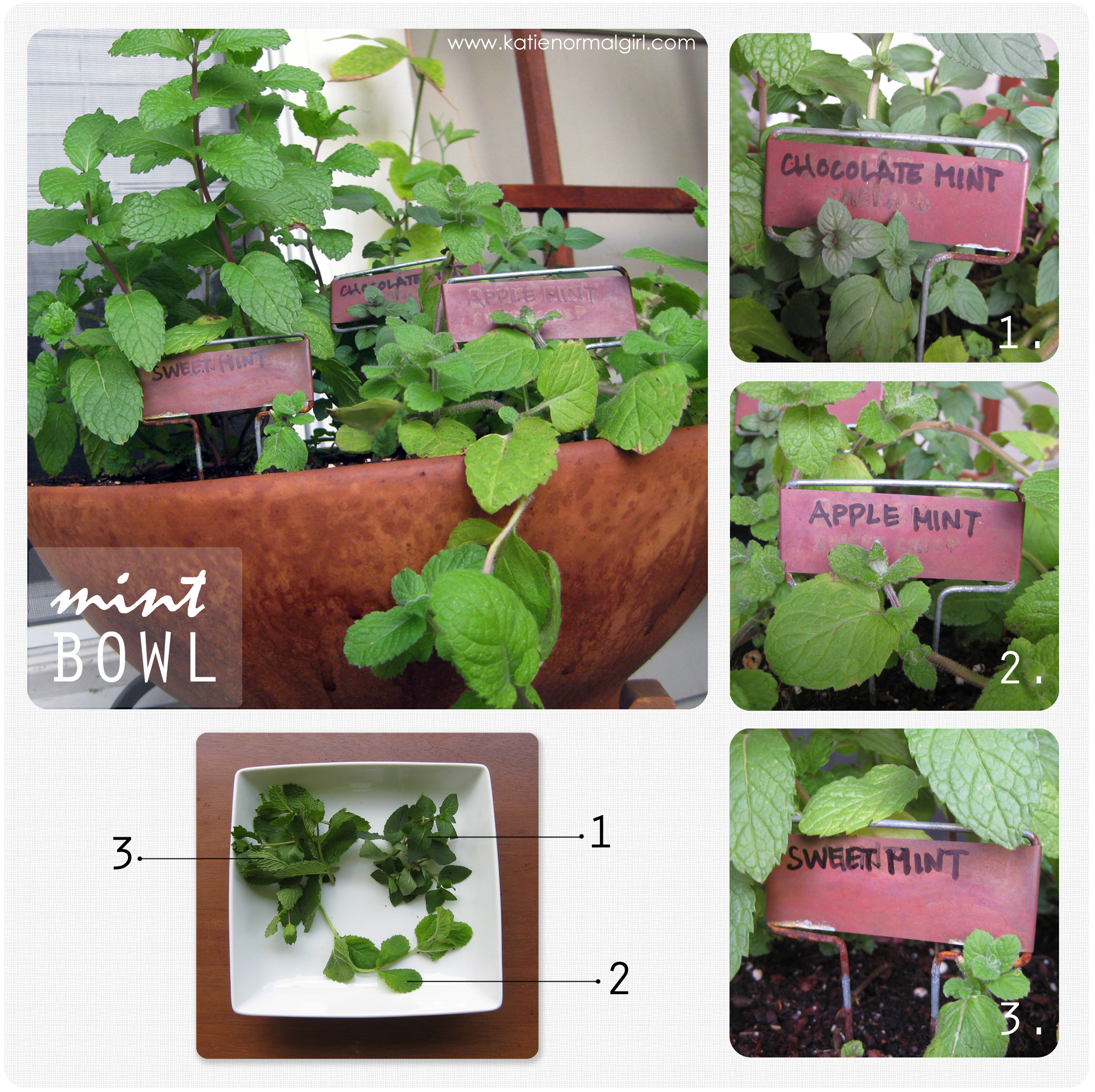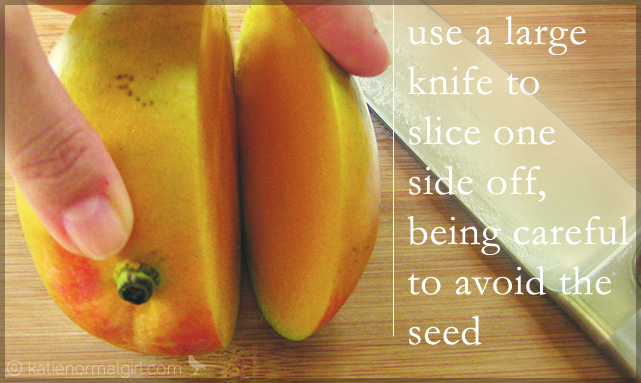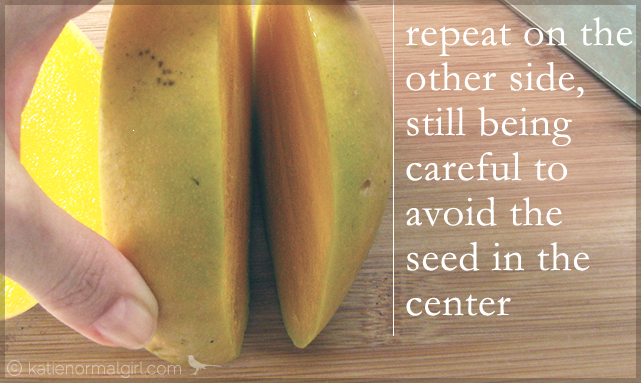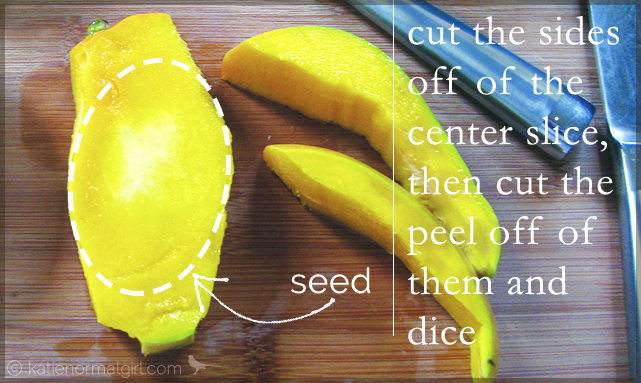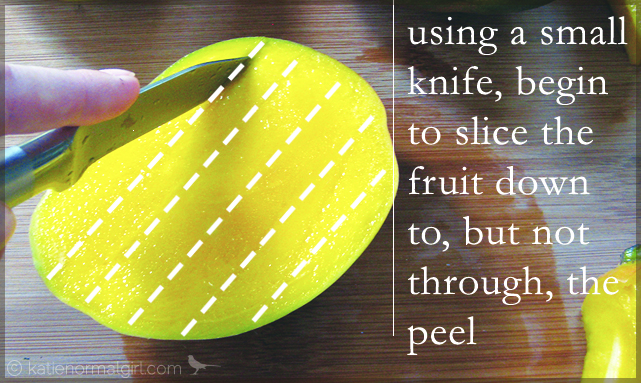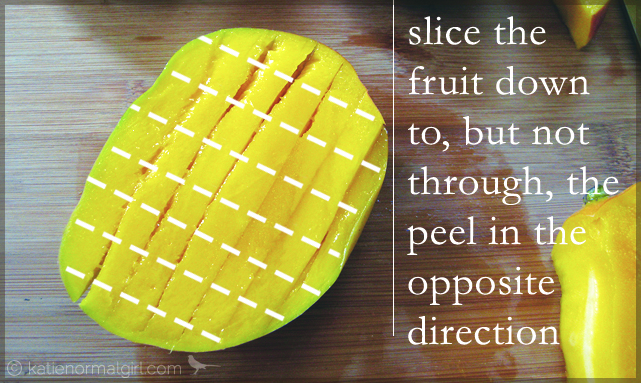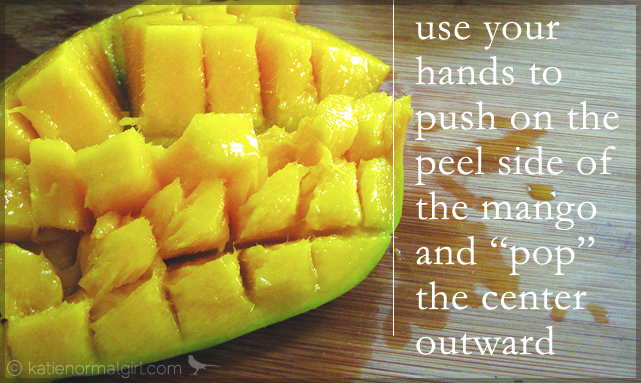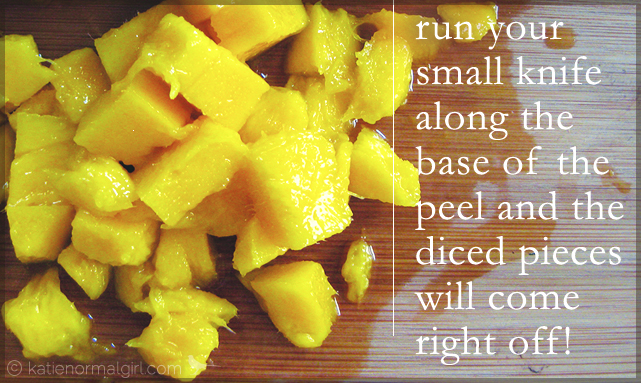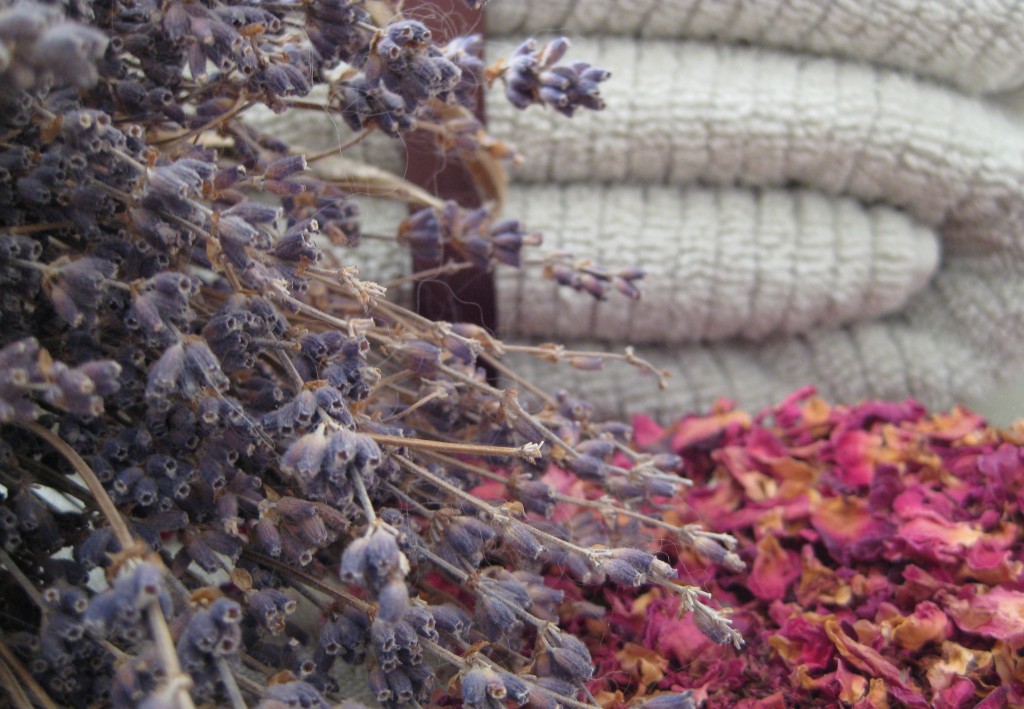In the comments of a recent post, one of my readers mentioned the mint that was exploding out of her garden. It reminded me of this post and what fun it was!
Tag: how to
Hat Trick: Staying Safe in the Summer Sun
 Summer is officially underway! It’s time to get outside for picnics, beach trips or just sitting in the park, sipping on sun tea and reading this summer’s best-seller.
Summer is officially underway! It’s time to get outside for picnics, beach trips or just sitting in the park, sipping on sun tea and reading this summer’s best-seller.
When you’re making your way out the door this summer, don’t forget your hat. It’s one of the easiest (and in my opinion, most fashionable) ways to stay safe in the sun. But how does it actually help, you may wonder?
Simple Summer Recipe: Mango Salsa
Now that you’ve learned how to dice a mango, what to do with it? You can throw the pieces of one mango into about two cups of your favorite pre-made salsa for tasty semi-homemade recipe. I like to pair mango with a medium or hot salsa because the sweet, cool fruit cuts the heat a little.
If you’re in the mood to make salsa from scratch, give this easy recipe a try.
Cutting Mangos Can Get Dicey
Mango season is almost over, so be sure to scoop up a couple of these yummy fruits the next time you’re in the store. When selecting a mango, pick one that is firm with just a small amount of give. You want a firmness between an apple and a ripe peach.
If you haven’t sliced a mango before, then you may not realize that there is a large seed in the center. You need to be careful to avoid cutting the seed because it’s very hard and your knife could slip and…well…bad things man…bad things. Also, don’t cut too close to the seed because the fruit around it is fibrous and not very tasty. Check out the pictorial below for some tips on how to dice a mango!
Now that you have this wonderful bounty, what shall you do with it? It’s tasty as-is, or you can toss it together with some raspberries and blueberries for a fancy fruit salad. There’s mango martinis, mango smoothies or one of my favorites…mango salsa.
No matter what you pick, it’s bound to be delicous because these little guys are at the peak of freshness and flavor through the end of the month.
Enjoy!

Beauty Bits: Applying Eye Moisturizer
The skin around your eyes is thin and very delicate. It must be treated with a gentle touch and great care. That being said, any time you’re applying creams, lotions or oils around the eyes, be sure to use your ring finger to do the spreading. It is your weakest finger and will deter you from pressing too hard.
Calming Oatmeal Facial
Original publish date: January 19, 2012
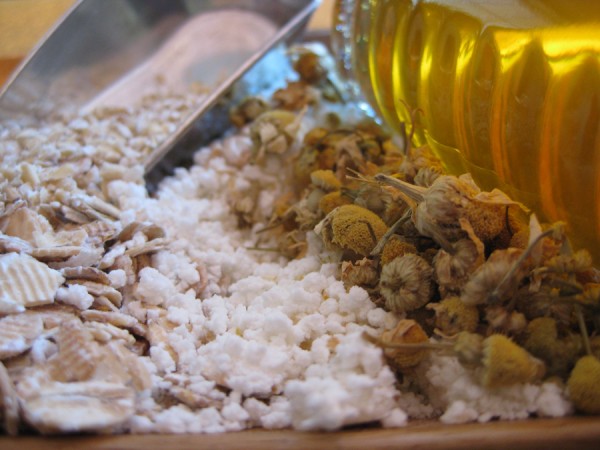 Last nerve frayed? Winter weather dried out your skin? No problem. The chamomile in this mask has natural anti-inflammatory properties that will ease your nerves. The honey is a natural humectant, pulling moisture from the air and drawing it to your skin. It will leave you feeling calm and moisturized, and who wouldn’t want that?
Last nerve frayed? Winter weather dried out your skin? No problem. The chamomile in this mask has natural anti-inflammatory properties that will ease your nerves. The honey is a natural humectant, pulling moisture from the air and drawing it to your skin. It will leave you feeling calm and moisturized, and who wouldn’t want that?
You’ll need:
2 1/2 tsp. powdered milk
2 tsp. ground oatmeal
1 tsp. honey
2 chamomile tea bags
Brew…
Place the chamomile tea bags in your favorite mug and pour in 1 cup boiling water. Put a saucer over the cup to trap the escaping steam, which is now infused with the beneficial constituents of the chamomile flowers. Let this steep for 10 minutes.
After the tea is done steeping, remove the tea bags, squeeze out any excess water and place them in the refrigerator to cool.
Mix…
In a small bowl, mix together the powdered milk, ground oatmeal, honey and 2 tsp. of the warm chamomile tea. The warm water will draw out the beneficial elements of the oatmeal and milk, while liquefying the honey, creating a thin paste.
Relax…
Using your fingers, apply the oatmeal mixture to your forehead, then gently sweep down your temples, under your eyes and around your nose. Move your fingers in small circles as you apply more mixture to your cheeks, around your mouth and down your neck.
As you apply the mixture, pay attention to your breathing, take slow, calm breaths. Enjoy the light scent of chamomile and honey as you inhale through your nose and exhale through your mouth. Feel the warm sensation of the oatmeal mixture as you gently spread it over your face.
When you’ve finished applying the mask, rinse your hands in warm water. Get the cooled tea bags from the refrigerator, then lie down with the tea bags placed over your closed eyes. Relax for 20 to 30 minutes and let the chamomile calm your skin and soothe your nerves.
And Rinse.
To rinse the mask off, use warm water and a wash cloth. You do not need to use soap or a cleanser. The mask will rinse clean without them and you want to allow the delicate essences of the chamomile flowers to linger on your skin. The honey will rinse off, leaving your skin feeling moisturized, without clogging your pores. Pat your face dry.
Dispose of (or compost!) the tea bags and finish your facial by sitting with a good book or magazine and sipping on the rest of the chamomile tea that you brewed earlier. If you’ve got the ingredients on hand, this entire process takes less than 45 minutes and can really replenish your mind and body after a draining day.
Happy brewing!

P.S. Who knew? Tea vs. Tisane
Did you know that in order for a beverage to be called “tea,” it actually needs to have tea leaves in it? So all of the herbal brews, like the chamomile tea you just made, are not actually teas…they’re tisanes, water infused with herbs. But seriously, who would ever call them that?? Chamomile tisane?
Gardening Journal: How to Sterilize Clay Pots
Materials Needed: bleach or hydrogen peroxide, scrub brush, rubber gloves
I have always loved the look of mold and calcium buildup on my terra cotta pots. Unfortunately that wonderful patina can mean unsanitary growing conditions for your potted plants. Give your plants their best chance for growth by sterilizing your clay and terra cotta pots before you plant. This easy process will help eliminate the possibility of fungal or bacterial diseases that may develop.
Soak the pot(s) in a solution of ten parts water to one part bleach or hydrogen peroxide. I like to use my kitchen sink but you can use a plastic bucket or basin. Allow the pots to soak for a minimum of 3 hours or you can leave them in the solution overnight if you prefer. After the pots have soaked, put on your rubber gloves and use a stiff bristled scrub brush to thoroughly scour the pot, inside and out. Rinse the pot and allow it to dry.
Your pots are now ready, and your new plants will have a great growing season!

The 21st Century Herbalist: Volume 1, Issue 17
It’s week 2 of DIY Skin Care Month and today I’m talking cleansing. It’s the first step in any good skincare regime (cleanse, tone, moisturize). At first it can sound so basic — my face is dirty, I will wash it — but it gets a little more complicated than that. What if you also need to remove makeup? What if you have acne, or dry skin or oily skin or just went for a run and there’s sweat pouring down your face?? Synthetics, chemicals, naturals, organics…whew, it can get exhausting. How do you sort through it all and come up with a solution that meets your skin’s needs? You ask The 21st Century Herbalist on HelloGiggles, of course!
Before we get to the specific cleansing tips and the recipe that I have for you, let’s start with the basics. These are tried and true methods for cleansing the skin and getting the greatest benefit with the least amount of damage, regardless of skin type.
1. I said it last week and I’ll say it again…hydrate. Any dermatologist, doctor or grandmother will tell you, water is the key to a healthy complexion. In order for skin to remain healthy and resilient, it needs to be properly hydrated from the inside out, so make
…read more (you’ll be redirected to my column on hellogiggles.com)
Ditch the Dryer Sheets…Freshen Laundry Naturally with Herbs
Ditch your dryer sheets and embrace the latest trend in simple, sustainable living…dryer sachets! These chemical-free, all-natural alternative to dryer sheets have been growing in popularity as people try to eliminate unnecessary chemicals from their homes, but have you ever wondered how they work? In this week’s column, I’ll tell you why they work and show you how to make your own.
What Is A Dryer Sachet And Why Does It Work?
A dryer sachet is a lot like any other sachet, it’s a bag or pouch made of porous fabric that is filled with fragrant herbs. What distinguishes dryer sachets from their culinary counterparts, is the type of herbs that are used in it. Most dryer sachets are made exclusively with lavender because it is a highly fragrant herb that eliminates static cling, and the residual smell left on clothing, repels moths. I’ve added fragrant rose petals in the custom herbal blend below, because I enjoy the light scent in combination with the lavender.
Dryer Sachet Herb Blend
The ingredients for this dryer sachet mix are gentle enough for sensitive skin and can be used when laundering children’s and infant’s clothing.
You’ll Need:
- 1/4 c. dried rose petals
- 1/4 c. dried lavender buds
- 4-5 drops lavender essential oil (optional)
- 1 dryer sachet*
*Dryer sachets can be purchased online or you can make your own using an old sock or stockings. You can also sew your own reusable and refillable dryer sachets, using fabric scraps or an old t-shirt.
Assembly:
Place the herbs in the dryer sachet of your choice and add the essential oil drops. If using an old sock or stockings, add the herbs and securely tie the end, or ends, into a knot. If you have enough fabric, you can tie a double knot to be safe.
To Use:
Each sachet can be used 7-10 times (the sachets can be used more than 10 times if you don’t mind a reduction in scent). Before each drying cycle, remove the sachet and pinch it between your fingers a few times, to release the herbal essences.
When you’ve used the bag and no longer notice a strong scent in your laundry, you can deodorize and freshen your vacuum cleaner by sprinkling the herbs on the floor and vacuuming them up!


